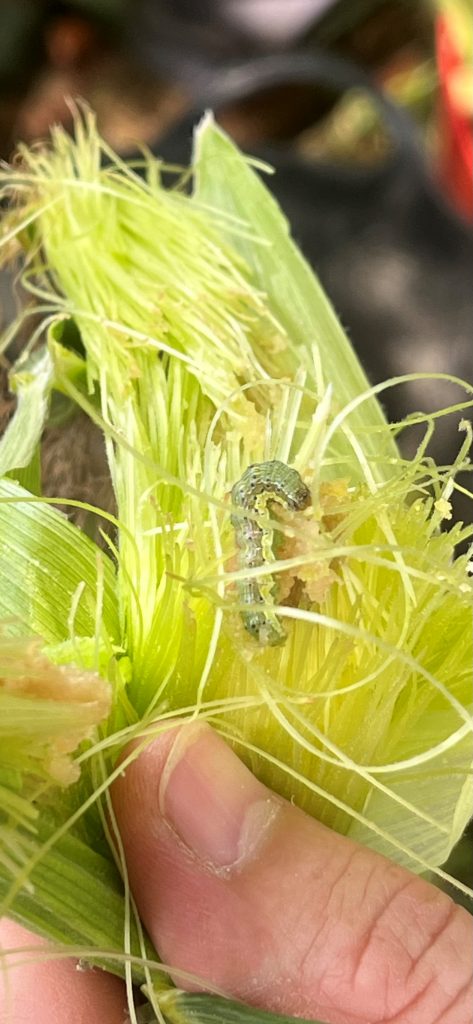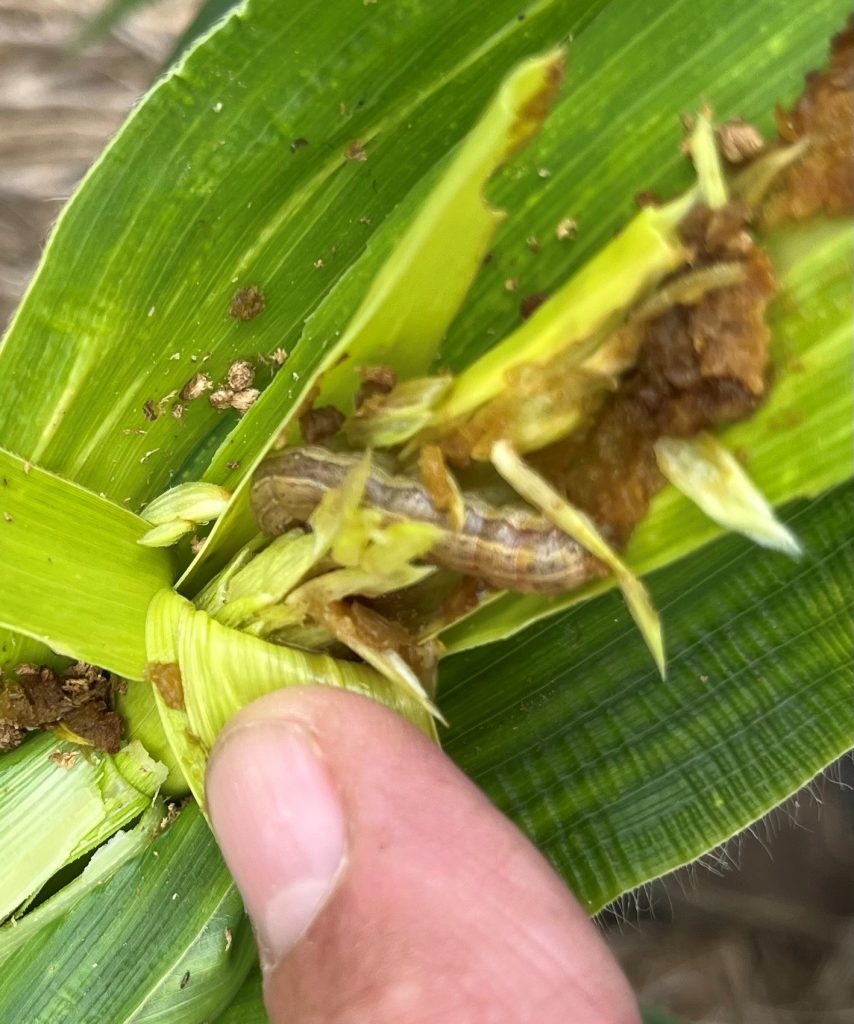By: Tom Kuhar and Brian Currin, Department of Entomology, Virginia Tech.
Early sweet has had its challenges this year in Virginia for sure. First the weather. A drought in June was hard on a lot of crops, but definitely corn if you weren’t able to irrigate. Following that up, a series of rainfall events almost every day in some locations for some stretches in July made it hard to spray insecticides on sweet corn in a timely manner. In addition to challenging weather, pest pressure has been unusually high. We are not even out of July yet and corn earworm moth numbers have been higher than usual in central and western Virginia this month in 2024. Moth catch in pheromone traps totaled 192 and 286 moths per trap last week in Montgomery County (western part of the state) and Halifax County (south central Virginia), respectively. That’s pretty high for July. Harvested sweet corn last week from Whitethorne, VA was heavily infested with corn earworms (Fig. 1) and later corn in the whorl stage had higher than usual infestations of fall armyworm (Fig. 2). This pest species usually comes later in the season. This year some early summer storms brought FAW moths from the south to Virginia.

Many sweet corn growers rely on insecticide spray programs to protect their ears from worm infestations. Some corn earworm populations have shown reduced susceptibility to pyrethroid insecticides such as lambda-cyhalothrin, bifenthrin, Hero, Baythroid, Asana XL, etc. Currently the top performing insecticide products with regards to corn earworm control in sweet corn include: Coragen, Coragen Evo, and Vantacor (all contain the same diamide active ingredient). These insecticides are also relatively safe on nontarget organisms like vertebrates, bees, and natural enemies. Beseige and Elevest also include the same diamide active ingredient paired with a pyrethroid. They are very effective, but less safe on beneficial organisms. The spinosyn products Radiant and Blackhawk are also fairly effective as is the old carbamate standby, Lannate LV. This older insecticide has performed well in recent efficacy trials in sweet corn. These are pretty much it when it comes to effective insecticides for sweet corn. All of these insecticides should be used in a rotation with other products. Recent insecticide trials have shown that rotating the aforementioned products with pyrethroids every other spray provides decent control. This may not be the case in areas that are showing high levels of insecticide resistance.

Table 1 shows an action threshold for spray intervals based on trap catches of moths. Our moth catch has been high in late July suggesting a short interval between sprays is probably needed.
| Table 1. Action thresholds and insecticide spray intervals during silking based on pheromone trap catch of CEW moths using the Scentry nylon mesh trap and Hercon Heliocoverpa zea lure. | |||
| Average number of CEW moths captured per trap | Recommended control action or days between sprays | ||
| per day | per 5 days | per week | |
| less than 0.2 | less than 1 | less than 1.4 | spray at green silk then reassess |
| 0.2 – 0.5 | 1 – 2.5 | 1.4 – 3.5 | 6 |
| 0.5 – 1 | 2.5 – 5 | 3.5 – 7 | 5 |
| 1 – 13 | 5 – 65 | 7 – 91 | 4 |
| >13 | >65 | >91 | 3 |
